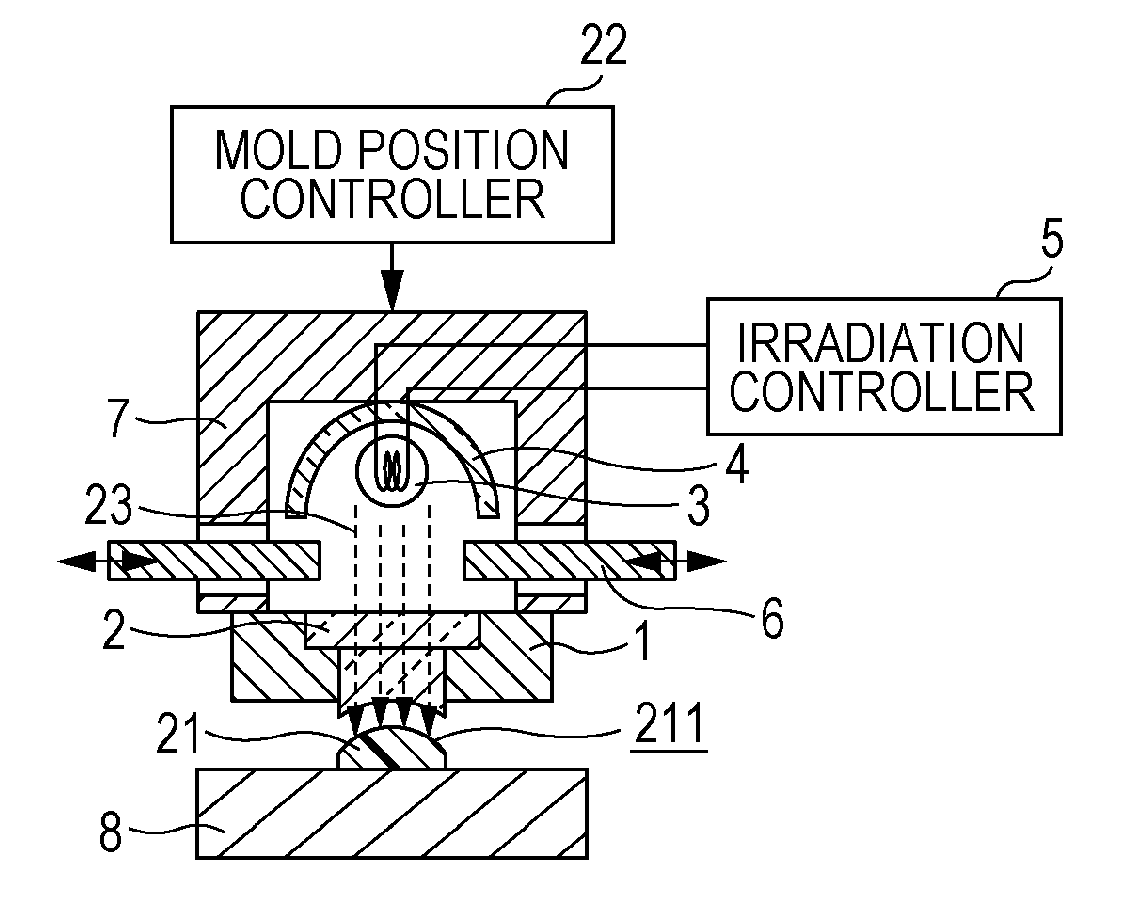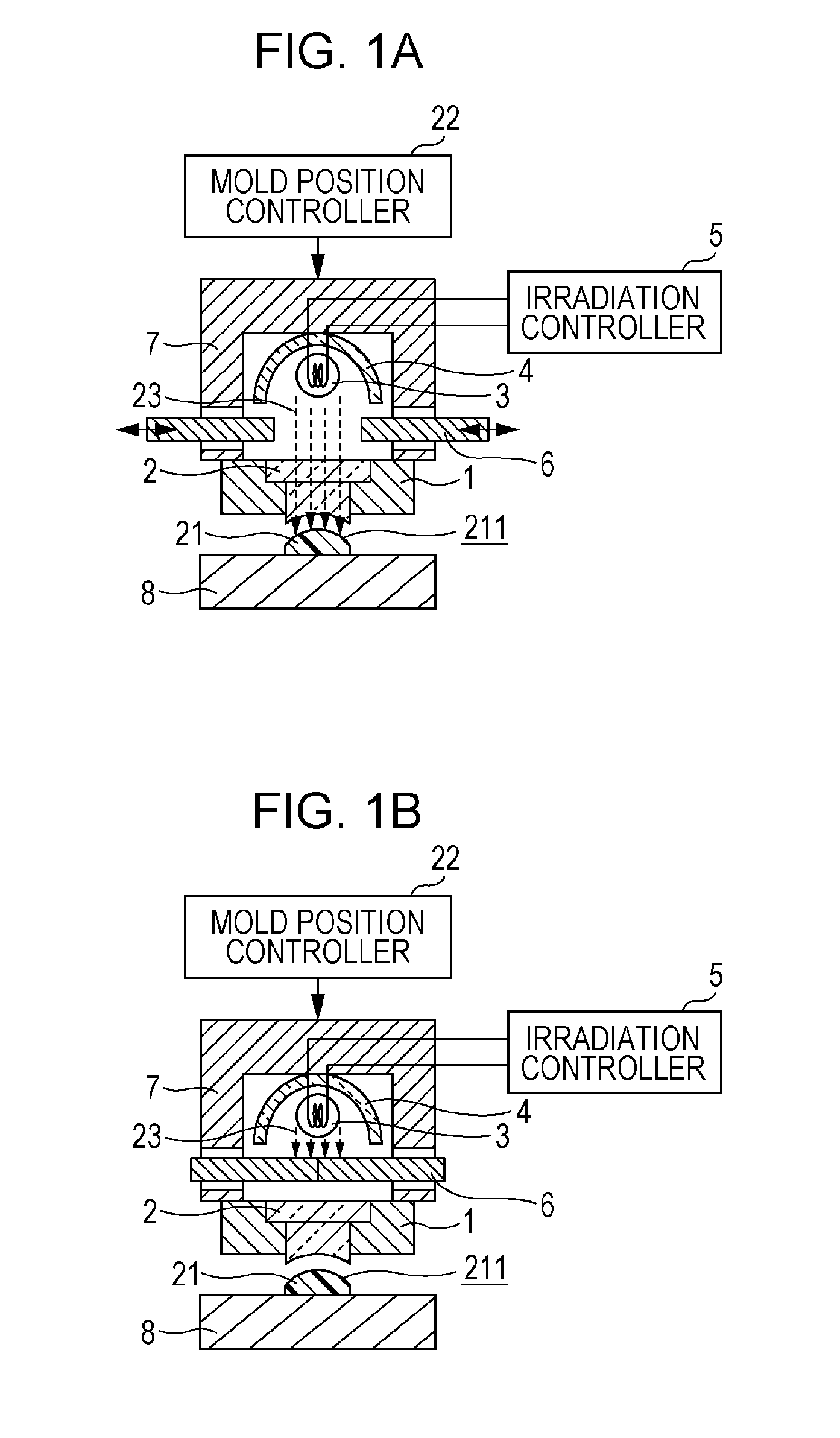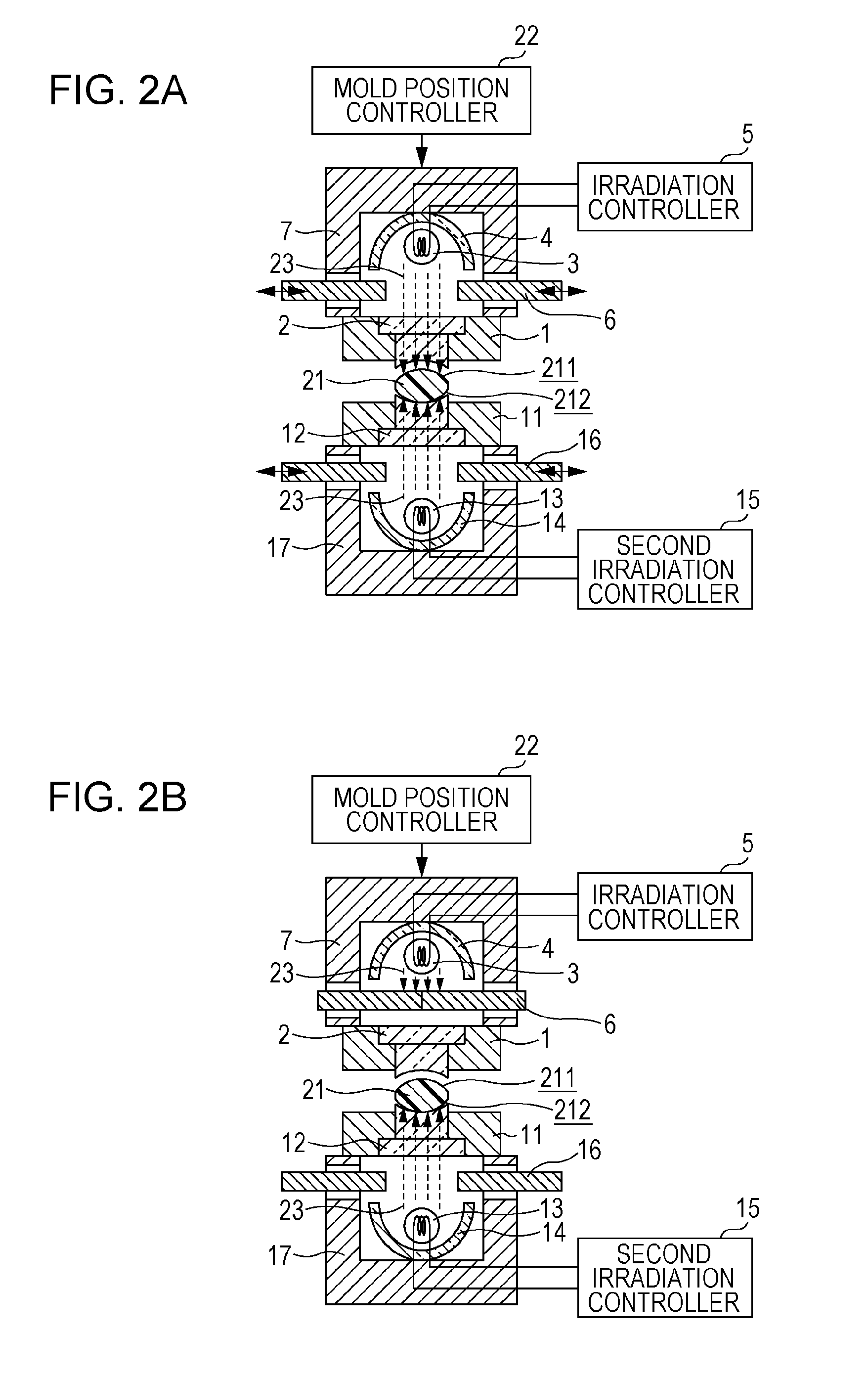Method of manufacturing optical component and apparatus for manufacturing optical component
a manufacturing method and technology for optical components, applied in the field of manufacturing optical components, can solve the problems of reducing long molding time, and long time, and achieve the effect of improving the optical performance of molded products and reducing molding tim
- Summary
- Abstract
- Description
- Claims
- Application Information
AI Technical Summary
Benefits of technology
Problems solved by technology
Method used
Image
Examples
first embodiment
[0034]FIG. 1 is a schematic view of a press molding machine corresponding to an apparatus for manufacturing an optical component according to a first embodiment the present invention. With reference to FIG. 1, reference numeral 2 represents a mold including at least one portion made of an infrared transmitting material (for example, quartz glass). The mold 2 is retained with a mold support 1 and is attached to a press unit 7. The press unit 7 includes an infrared irradiator 3 including a carbon lamp. An infrared ray 23 (may also be referred to as infrared beam or infrared light) emitted from the infrared irradiator 3 is directed to the mold 2 by a condenser mirror 4 and is thereby applied to a substrate 21 made of resin.
[0035]The intensity of the infrared ray 23 is controlled with an irradiation controller 5 and the irradiation of the substrate 21 with the infrared ray 23 is controlled by the switching operation of a shutter 6 in an on / off manner.
[0036]In this embodiment, the press ...
second embodiment
[0054]An apparatus for manufacturing an optical component according to a second embodiment of the present invention will now be described with reference to FIGS. 2A and 2B. FIGS. 2A and 2B illustrate a schematic view of a press molding machine corresponding to the apparatus according to the second embodiment. In FIGS. 2A and 2B, the same portions as those shown in FIGS. 1A and 1B are denoted by the same reference numerals. Thus, reference numerals already described as those used in FIG. 1 will not be described in detail. In this embodiment, the surface 211 of the substrate 21 described in the first embodiment is shaped and a second surface 212 of the substrate 21 that is opposite to the first surface 211 thereof is also shaped with a second mold 12.
[0055]With reference to FIG. 2A, the second mold 12 is placed on the opposite side of the substrate 21 from the mold 2. The second surface 212 of the substrate 21 is shaped with the second mold 12. The second mold 12 includes at least one...
third embodiment
[0072]An apparatus for manufacturing an optical component according to a third embodiment of the present invention will now be described. FIG. 3 is a schematic view of a press molding machine corresponding to the apparatus according to the third embodiment. The same portions as those shown in FIG. 2 are denoted by the same reference numerals as those used in FIG. 2 and will not be described in detail. In this embodiment, an automatic hand 24 (e.g., robotic positioned) holds and positions a substrate 21. Other components are substantially the same as those described in the second embodiment. A method of manufacturing an optical component according to this embodiment is described below.
[0073]Before manufacturing steps are started, a shutter 6 and a second shutter 16 are closed and an infrared irradiator 3 and a second infrared irradiator 13 are turned on in advance.
[0074]The automatic hand 24 is suspended in such a state that the substrate 21 is held by the automatic hand 24 and the g...
PUM
| Property | Measurement | Unit |
|---|---|---|
| temperature | aaaaa | aaaaa |
| peak wavelength | aaaaa | aaaaa |
| speed | aaaaa | aaaaa |
Abstract
Description
Claims
Application Information
 Login to View More
Login to View More - R&D
- Intellectual Property
- Life Sciences
- Materials
- Tech Scout
- Unparalleled Data Quality
- Higher Quality Content
- 60% Fewer Hallucinations
Browse by: Latest US Patents, China's latest patents, Technical Efficacy Thesaurus, Application Domain, Technology Topic, Popular Technical Reports.
© 2025 PatSnap. All rights reserved.Legal|Privacy policy|Modern Slavery Act Transparency Statement|Sitemap|About US| Contact US: help@patsnap.com



